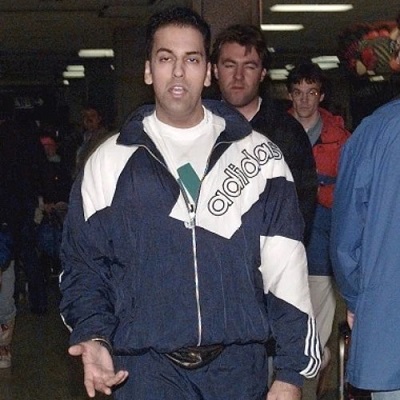Mumbai, (Asian independent) Canada has not only been home to Khalistan sympathisers, but also provided refuge to Indian gangsters wanted by enforcement agencies.
Even as the names of Goldie Brar and Arsh Dalla do the rounds as wanted gangsters, with the National Investigation Agency (NIA) hot in their pursuit, a name that comes to mind is Binda Johal, who could be described as the original Indo-Canadian gangster.
Such was Johal’s notoriety that Indo-Canadian director Deepa Mehta, who is well-known for films such as ‘Fire’ and ‘Earth’, made a critically panned movie, ‘Beeba Boys’, inspired by the gangster, with Randeep Hooda playing Jeet Johar, the character modelled after him.
Born in India on January 14, 1971, Johal found himself in Vancouver at the age of four when his family landed there. After he was the target of an armed assault in the aftermath of the assassination of Indira Gandhi, his parents removed his turban and got his hair cut.
Not that it was end of the troubles that visited him — only, he was now the perpetrator, not the victim. He was expelled from one school for having brutally assaulted his vice-principal and from another for the possession of a dangerous weapon.
From then on, Johal started flirting with crime and sank deeper into it.
All this was happening at a time when Vancouver’s Hispanic immigrants were being overshadowed by South Asians. Interestingly, one of those who went to school with Johal was Harjit Sajjan, who later rose to become Canada’s avowedly pro-Khalistan defence minister.
Johal became a part of an old Hispanic gang called Los Diablos (‘The Devils’), which became more Indo-Canadian, and eventually became known as the Punjabi Mafia. The crime newbie became infamous as a hit-man working for Jimmy and Ron Dosanjh, the more established gangsters. He betrayed and killed both of them as he got into the business of pushing cocaine.
On March 14, 1991, Colombian drug trafficker Teodoro Salcedo was murdered in Vancouver. Jimmy Dosanjh was charged with the murder and arrested.
When Dosanjh was in jail awaiting his trial, which ended in his acquittal, Johal, who was diagnosed to have an antisocial personality disorder, made himself the leader of the gang.
At the peak of his career, which spanned drug running, manufacturing synthetic narcotics such as Fentanyl and executing hit jobs, Johal was reported to have amassed a personal fortune pegged at Canadian $4 million.
He was also said to have links with the terrorist organisation, Babbar Khalsa International, and charged with the killing of investigative journalist Ron Dosanjh.
Not one to live his life in the shadows, Johal soon acquired a public profile for his flashy lifestyle, media appearances and penchant for blowing up money in nightclubs.
When he was finally arrested and brought to trial for the killing of the Dosanjh brothers, it took a scandalous turn because it turned out that juror Gillian Guess was involved in a romantic relationship with Johal’s co-accused Peter Gill. This trial collapsed thereafter and Johal walked out a free man, only to be implicated in a strip club stabbing and a number of drive-by shootings.
Johal was barely 29 when he met the same fate that he visited upon his victims. He was gunned down at the Palladium nightclub in Vancouver by an unidentified assailant in the presence of 300 witnesses, none of whom came forward to point out the attacker.
He may not have been brought to justice, but Johal did get his poetic justice.








